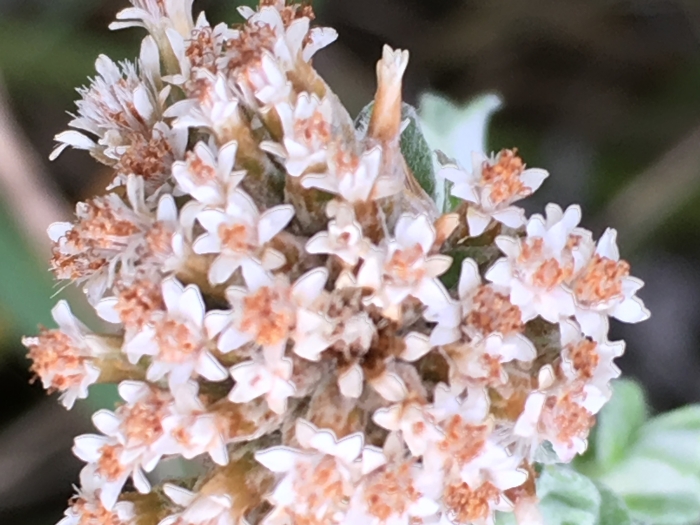Thyme-Leaf Plecostachys
(Plecostachys serpyllifolia)
Thyme-Leaf Plecostachys (Plecostachys serpyllifolia)
/
/

Caroline Voget
CC BY 4.0
Image By:
Caroline Voget
Recorded By:
Copyright:
CC BY 4.0
Copyright Notice:
Photo by: Caroline Voget | License Type: CC BY 4.0 | License URL: http://creativecommons.org/licenses/by/4.0/ | Rights Holder: Caroline Voget | Publisher: iNaturalist | Date Created: 2019-06-30T09:06:26Z |
























Estimated Native Range
Summary
Plecostachys serpyllifolia, commonly known as Thyme-leaf Plecostachys, is a perennial herb native to the fynbos biome of South Africa, which includes a range of habitats such as coastal plains, mountainous areas, and sandy soils. This plant is particularly adapted to the nutrient-poor, acidic, and well-drained soils found in these regions. It typically forms low-growing mats with small, aromatic, thyme-like leaves. The white to pink flowers are small but numerous, blooming in summer and attracting a variety of pollinators, including bees and butterflies.
Thyme-leaf Plecostachys is valued for its drought tolerance and ability to thrive in poor soils, making it an excellent choice for rock gardens, xeriscaping, and as a ground cover in sunny areas. Its dense mat-forming habit can help to suppress weeds and stabilize soil. In cultivation, it requires minimal maintenance, needing only occasional watering once established. It is best grown in full sun to ensure vigorous growth and abundant flowering. While generally disease-free, it can suffer in overly wet or poorly drained soils.CC BY-SA 4.0
Thyme-leaf Plecostachys is valued for its drought tolerance and ability to thrive in poor soils, making it an excellent choice for rock gardens, xeriscaping, and as a ground cover in sunny areas. Its dense mat-forming habit can help to suppress weeds and stabilize soil. In cultivation, it requires minimal maintenance, needing only occasional watering once established. It is best grown in full sun to ensure vigorous growth and abundant flowering. While generally disease-free, it can suffer in overly wet or poorly drained soils.CC BY-SA 4.0
Plant Description
- Plant Type: Shrub, Herb
- Height: 1.5-2 feet
- Width: 3-4 feet
- Growth Rate: Moderate
- Flower Color: White
- Flowering Season: Summer
- Leaf Retention: Evergreen, Semi-deciduous
Growth Requirements
- Sun: Full Sun
- Water: Low, Medium
- Drainage: Fast
Common Uses
Drought Tolerant, Groundcover, Low Maintenance, Rock Garden
Natural Habitat
Native to the fynbos biome of South Africa, including coastal plains, mountainous areas, and sandy soils
Other Names
Common Names: Thyme-leaved Sandwort, Thyme-leaved Plecostachys
Scientific Names: , Plecostachys serpyllifolia, Gnaphalium orbiculare, Gnaphalium serpyllifolium, Gnaphalium serpyllifolium var. serpyllifolium, Helichrysum orbiculare, Helichrysum serpyllifolium, Helichrysum serpyllifolium subsp. orbiculare, Helichrysum serpyllifolium var. orbiculare, Helichrysum serpyllifolium var. serpyllifolium,
GBIF Accepted Name: